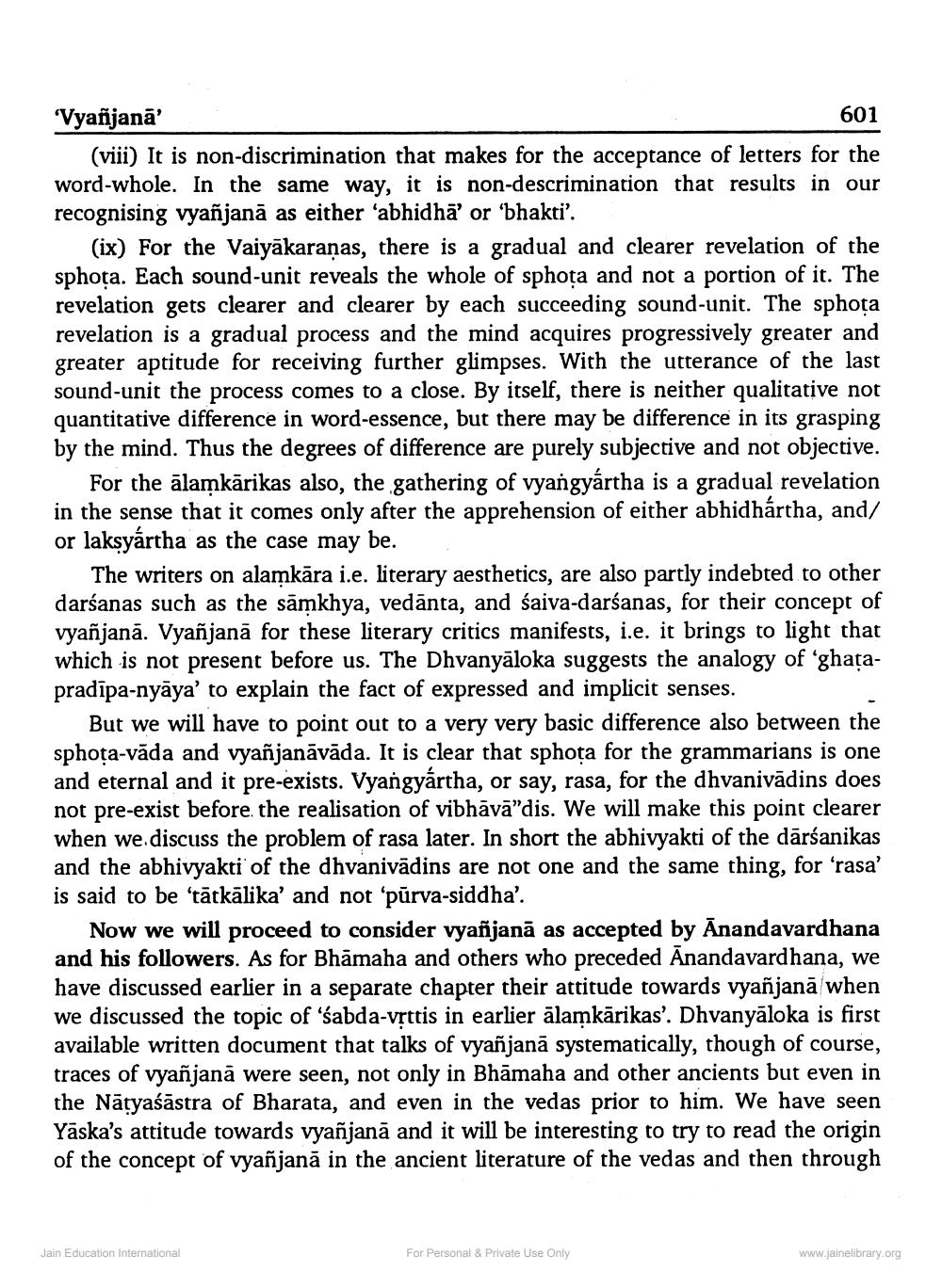________________
'Vyañjanā
601 (viii) It is non-discrimination that makes for the acceptance of letters for the word-whole. In the same way, it is non-descrimination that results in our recognising vyañjanā as either 'abhidhā' or 'bhakti'.
(ix) For the Vaiyākarañas, there is a gradual and clearer revelation of the sphota. Each sound-unit reveals the whole of sphota and not a portion of it. The revelation gets clearer and clearer by each succeeding sound-unit. The sphota revelation is a gradual process and the mind acquires progressively greater and greater aptitude for receiving further glimpses. With the utterance of the last sound-unit the process comes to a close. By itself, there is neither qualitative not quantitative difference in word-essence, but there may be difference in its grasping by the mind. Thus the degrees of difference are purely subjective and not objective.
For the alamkārikas also, the gathering of vyangyártha is a gradual revelation in the sense that it comes only after the apprehension of either abhidhártha, and/ or lakṣyártha as the case may be.
The writers on alamkāra i.e. literary aesthetics, are also partly indebted to other darśanas such as the sāmkhya, vedanta, and saiva-darśanas, for their concept of vyañjanā. Vyañjanā for these literary critics manifests, i.e. it brings to light that which is not present before us. The Dhvanyāloka suggests the analogy of 'ghatapradīpa-nyaya' to explain the fact of expressed and implicit senses.
But we will have to point out to a very very basic difference also between the sphoța-vāda and vyañjanāvāda. It is clear that sphoța for the grammarians is one and eternal and it pre-exists. Vyangyártha, or say, rasa, for the dhvanivādins does not pre-exist before the realisation of vibhāvā"dis. We will make this point clearer when we discuss the problem of rasa later. In short the abhivyakti of the darśanikas and the abhivyakti' of the dhvanivādins are not one and the same thing, for 'rasa' is said to be 'tātkālika' and not 'pūrva-siddha'.
Now we will proceed to consider vyañjanā as accepted by Anandavardhana and his followers. As for Bhāmaha and others who preceded Ānandavardhana, we have discussed earlier in a separate chapter their attitude towards vyañjanā when we discussed the topic of 'sabda-vsttis in earlier ālamkārikas'. Dhvanyāloka is first available written document that talks of vyañjanā systematically, though of course, traces of vyañjana were seen, not only in Bhāmaha and other ancients but even in the Nātyaśāstra of Bharata, and even in the vedas prior to him. We have seen Yaska's attitude towards vyañjana and it will be interesting to try to read the origin of the concept of vyañjanā in the ancient literature of the vedas and then through
Jain Education Interational
For Personal & Private Use Only
www.jainelibrary.org




